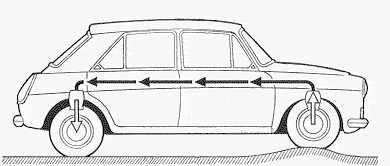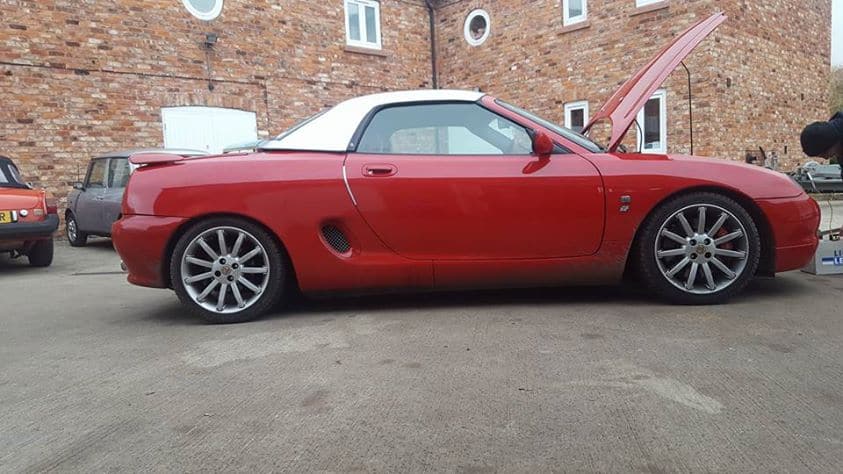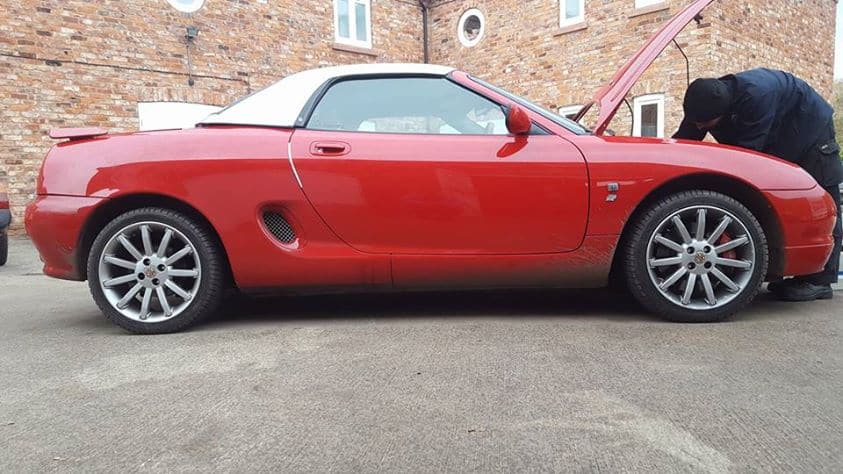Here at John Woods Motorcare Ltd we offer the Hydrolastic / Hydragas Suspension top up service for all cars fitted with those suspension systems.
There is usually quite a bit of confusion as to the difference between hydrolastic and hydragas systems, but it’s fairly simple. hydrolastic suspension has a rubber spring built into it, while hydragas uses a compressed-gas spring. Both are suspension systems rather than just springs, in that they include a damping system to slow the action of the suspension. The overall operation of both systems is the same.
The principle element is a sealed container of fluid for each suspension unit, one for each wheel. These are then linked fore and aft; the left front linked to the left rear, along with the right front linked to the right rear. In actual fact, there are two containers for each unit, stacked on top of each other. it’s the top ones that are linked together, and the bottom ones that are linked to the suspension assembly and carrying the majority of the fluid. In order to flow to another unit, the fluid has to flow through a valve assembly between the two containers, and then through a pipe to the other unit.

The principle element is a sealed container of fluid for each suspension unit, one for each wheel. These are then linked fore and aft; the left front linked to the left rear, along with the right front linked to the right rear. In actual fact, there are two containers for each unit, stacked on top of each other. it’s the top ones that are linked together, and the bottom ones that are linked to the suspension assembly and carrying the majority of the fluid. In order to flow to another unit, the fluid has to flow through a valve assembly between the two containers, and then through a pipe to the other unit.
The idea is that if the front wheel hits a bump, the compression of the suspension pushes the fluid to the rear unit. This causes the rear suspension to extend by the same amount that the front compresses, keeping the car level despite the bump, eliminating the fore/aft pitching that would occur if the bump affected the front suspension alone – as would happen with a “normal” suspension system. The entire process is reversed when the rear wheel reaches the bump, again keeping the car level, and everything works in the same fashion for potholes etc. Click on the right-hand image for a simple animation of the system in action.
Both systems are designed to be fit-and-forget parts, and history has shown that they have a working life in the region of 15 years plus before things like leakage become an issue. They provide an excellent quality of ride without compromising handling, and, providing the damping is set up correctly, don’t “wallow” under cornering, braking and accelerating. The continued development of hydragas eventually led to fully cross-linked systems joining both the left and right sides together to make the most of the benefits.
(Information courtesy of: InitialDave.Com)


Examples of cars using hydrolastic suspension
It is surprising just how many vehicles utilise this suspension setup:
- Morris / Austin / Wolseley / MG 1100 / 1300, Riley Kestrel / 1300 & Vanden Plas Princess 1100 / 1300
- Innocenti IM3 / IM3S / I4 / I5 (IT)
- Austin Apache / Victoria (ZA/ES)
- Morris 1500 / Nomad (AU/NZ)
- Austin / Morris Mini & Wolseley Hornet / Riley Elf (from 1964 to 1971)
- Austin / Morris 1800 / 2200 & Wolseley 18/85 / Six
- Austin / Morris Kimberley / Tasman (AU/NZ)
- Austin Maxi (until March 1978)
- Austin 3-Litre
Examples of cars using Hydragas suspension
- Austin Allegro & Vanden Plas 1500 / 1750
- Austin / Morris / Wolseley 18-22, Princess & Austin Ambassador
- Austin Maxi (from March 1978 onwards)
- Austin / MG Metro (not interconnected front to rear) & Rover Metro / 100
- MGF
